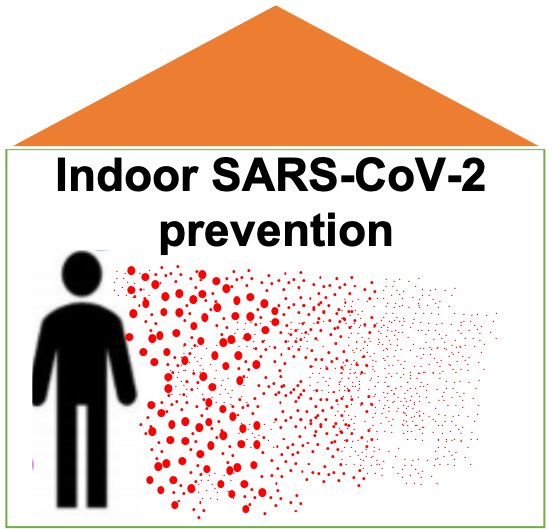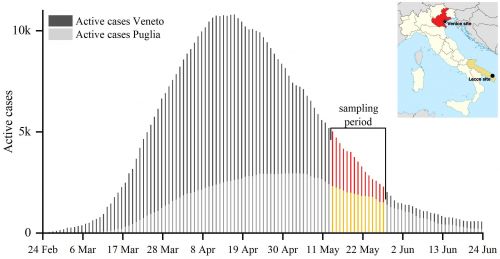INFORMARE: Consulenza Drofa
Consulenza per la progettazione e realizzazione di un sistema previsionale meteorologico e di un sistema di osservativo di monitoraggio meteo-ambientale - INFOR-MARE 2018 - CONSULENZA PROAMBIENTE

Consulenza per la progettazione e realizzazione di un sistema previsionale meteorologico e di un sistema di osservativo di monitoraggio meteo-ambientale - INFOR-MARE 2018 - CONSULENZA PROAMBIENTE

"Svolgimento di attività di ricerca per la progettazione di applicativi e lo sviluppo software per la gestione di pannelli digitali, al fine di creare un sistema informativo integrato per la divulgazione dei dati osservativi e previsionali inerenti gli as
Obiettivo primario del progetto e' quello di rielaborare e mettere a sistema tutte le informazioni meteo-climatiche presenti sul litorale Emiliano-Romagnolo (E-R) in una banca dati. La realizzazione della banca dati di progetto sara' funzionale alla progettazione e creazione di tre strumenti ICT come dimostratori di progetto: 1) un portale web in grado di visualizzare su richiesta le informazioni generali dai progetto di tipo meteo-climatiche, di qualita' dell'aria e delle acque di balneazione; 2) una rete di pannelli digitali distribuiti in loco in alcune aree chiave per il turismo balneare; 3) una "App" finalizzata a diffondere informazioni meteo-climatiche specifiche, creata sulla base delle abitudini degli utilizzatori finali.
Il progetto mira alla raccolta di particolato atmosferico, PM10 e PM2.5, in zone particolarmente sensibili all’impatto del PM sulla salute umana e ambiente (hot spot ambientali), attraverso l’utilizzo di campionatori SMART SAMPLER HSRS outdoor sviluppati da Fai Instruments s.r.l., una parte dei quali saranno accoppiati al nuovo OPC IOMS che permette rilevazioni ad alta risoluzione temporale del particolato atmosferico. Nello specifico il lavoro verrà sviluppato attraverso i seguenti obiettivi specifici:
1) Determinazione delle variabili spaziali del PM e delle sue componenti in aree urbane, extraurbane ed industriali, al fine di realizzare delle mappe di concentrazione utili all’individuazione delle principali sorgenti di inquinamento. L’utilizzo in parallelo degli OPC IOMS in numero da definire saranno preziosi per ricostruire gli andamenti ad alta risoluzione temporale in parallelo a quelli a bassa risoluzione temporale.
2) Analisi dei filtri raccolti per approfondire la distribuzione spaziale delle sorgenti di combustione (contenuto di OC/EC) e dei parametri indiretti di tossicità come il potenziale ossidativo. Lo studio permetterà sia l’analisi della distribuzione spaziale della componente carboniosa del particolato sia la sua correlazione con un indicatore indiretto di tossicità permettendo di valutare le potenzialità dell’utilizzo di questi campionatori negli studi epidemiologici o comunque sugli studi correlati agli effetti del particolato sulla salute.

Maintaining the right degree of humidity and adequate air exchange prevents the spread of the virus in indoor environments, especially where the risk is higher, such as hospitals and medical practices. This is confirmed by an international study conducted, among others, by CNR-Isac researchers and published in the International Journal of Environmental Research and Public Health (https://www.mdpi.com/1660-4601/17/22/8553).

A seguito del convegno "ArtEclima: tra emergenze e difesa dei nostri Beni Culturali" (Senato della Repubblica, 21 Settembre 2020) sono stati organizzati dalla senatrice Michela Montevecchi, membro della commissione Cultura di Palazzo Madama, due eventi sul tema dell’impatto dei cambiamenti climatici sul patrimonio culturale e paesaggistico con la partecipazione di esperti rappresentanti delle istituzioni, del mondo accademico, della ricerca e dell’impresa.

Quest'anno potete rimanere comodamente sul divano e passare da un evento realizzato a Bologna a quello registrato a Lamezia Terme semplicemente con un paio di click sulla tastiera. Tutti i progetti finanziati per il 2020 dalla Commissione Europea sono stati infatti realizzati online - 27 Novembre 2020.
Consultate i programmi, registrarvi alle piattaforme se richiesto e godetevi lo spettacolo realizzato da ISAC per il 2020:

A multidisciplinary study, conducted in May 2020, analyses the atmospheric concentrations of SARS-CoV-2 in Venice and Lecce, highlighting the implications for airborne transmission. The study, published in Environment International, was conducted by Cnr-Isac, Ca' Foscari University of Venice, Cnr-Isp, and Istituto Zooprofilattico Sperimentale della Puglia e della Basilicata.